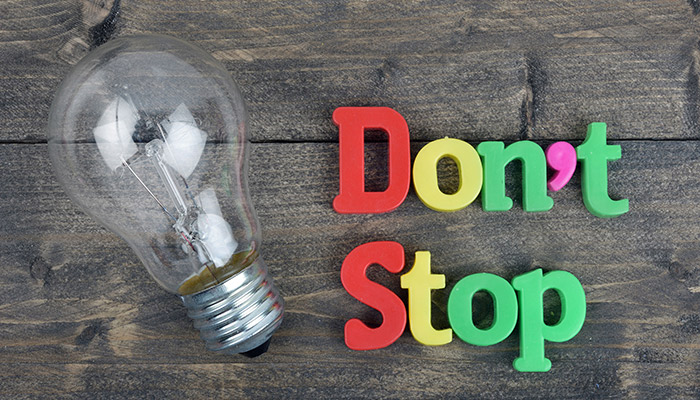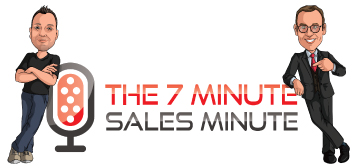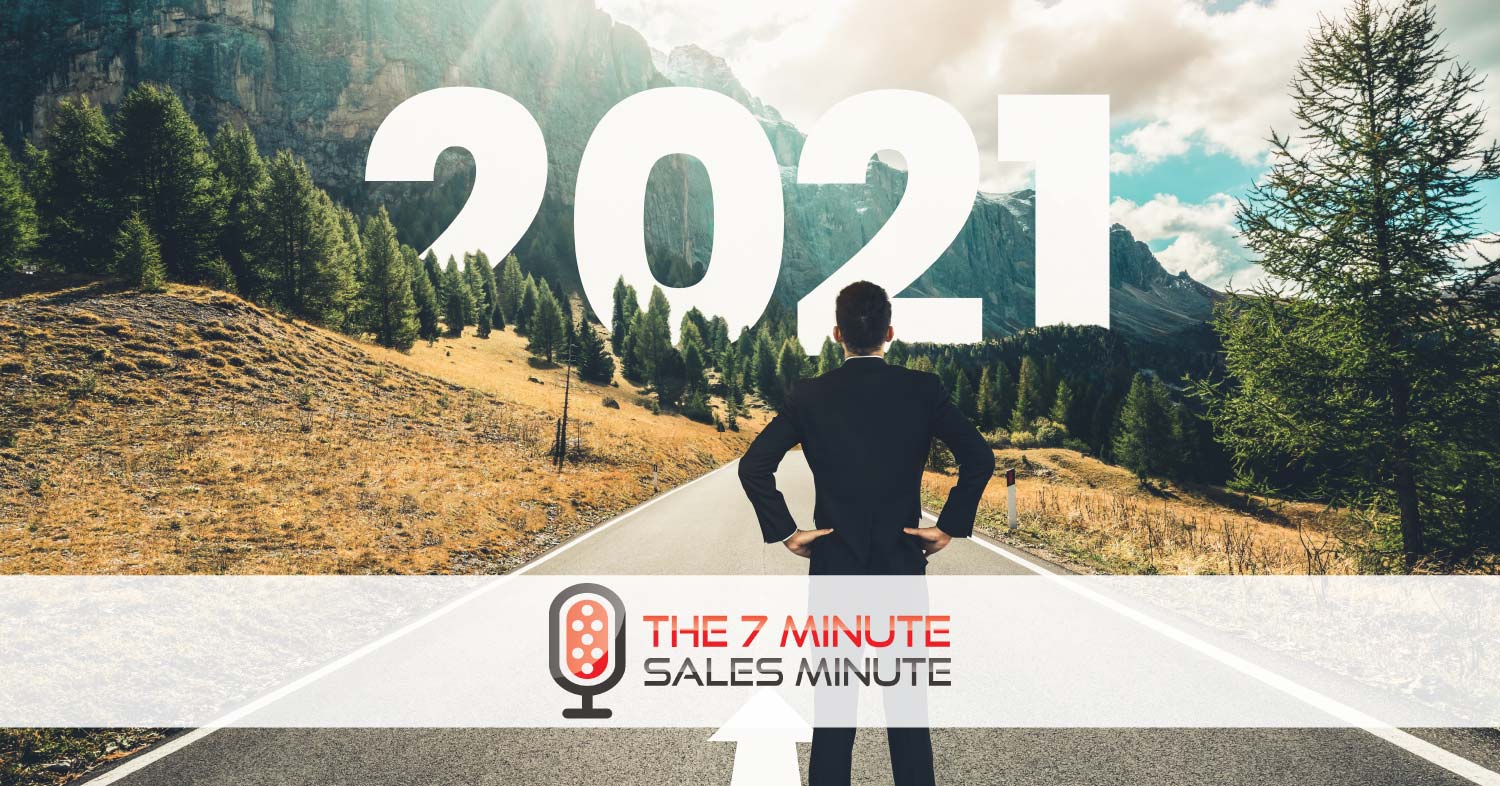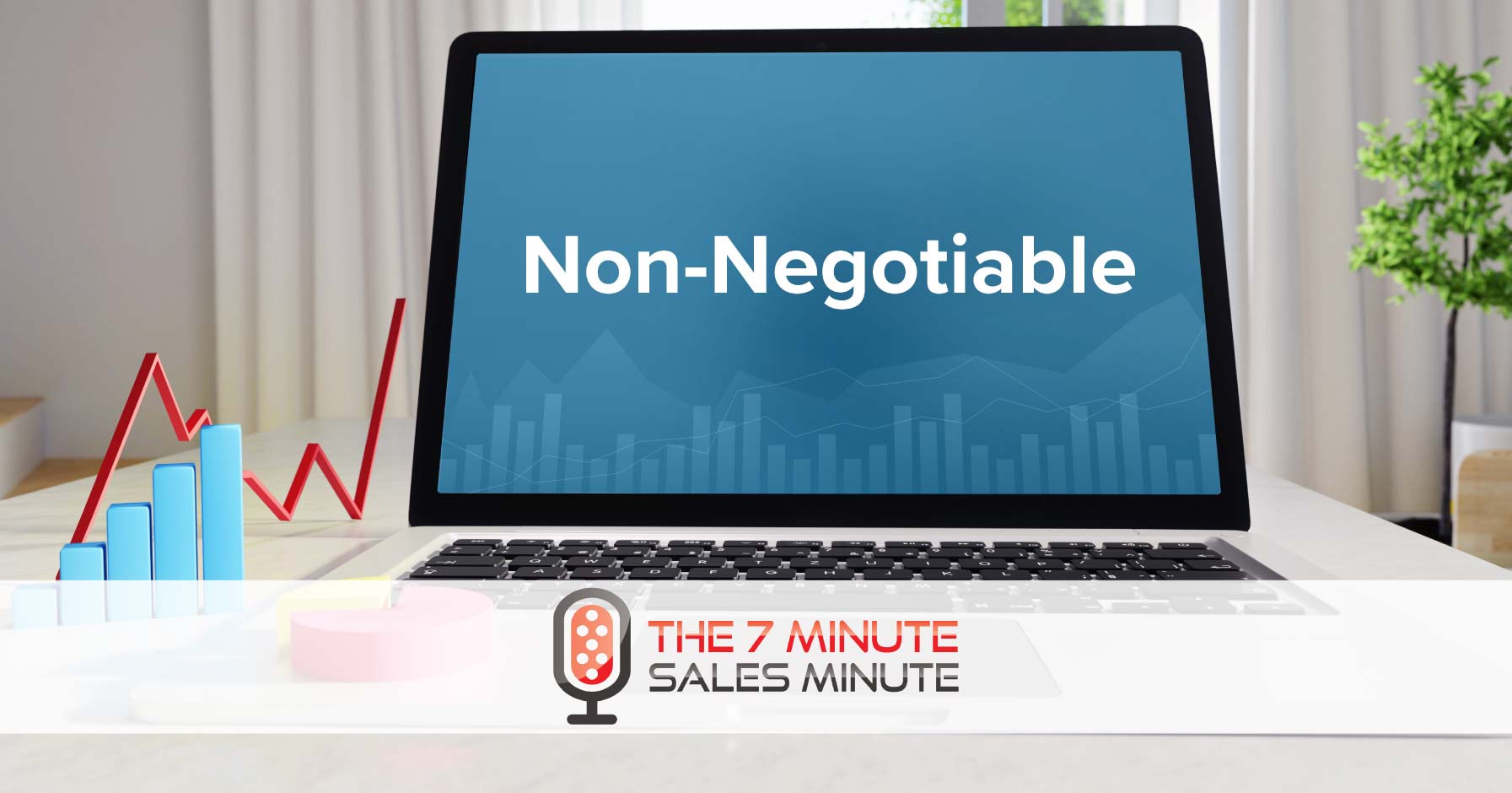
Poor follow up can cost you money.
In this episode, the boys give you seven action items to help ensure your follow-up game is on point.
Overview of TBSU 90-Day Kickstart program.
Specifically geared towards salespeople and helping them grow their pipelines. $90 for 120 days!
Read the transcript
Jon: Jon Dwoskin.
Scott: This is The Seven Minute Sales Minute.
Jon: Welcome, everybody.
Scott: Good morning, Jon.
Jon: Scott, good morning. How are you?
Scott: Doing great today man. It’s a beautiful rainy day here in Detroit.
Jon: Yeah, it is. It’s good luck when it rains. Today is a good luck podcast.
Scott: All right. Cool. I like to hear that.
Jon: Yeah. Absolutely. Folks, thanks for listening. We appreciate it. Thanks. We know you got a lot of options, so let’s just start off with a quick thank you. Scott, what should we address and talk about today and share with our loyal listeners?
Scott: We’ve got a good show planned today. First, I did want to ask something of you. I noticed on Facebook that you have launched a program. Tell us a little bit about it, Jon.
Jon: Typically, I work with clients one on one. I appreciate you asking. That really wasn’t a part of today’s podcast. I’ll tell you a quick gist of what it is. Typically, I work with clients and companies locally, around the country. All over the world, frankly. I wanted something that was specifically geared towards salespeople and sales people that can use something to grow their pipeline.
I find – and I know we’ve talked about on the show a lot – that sales people a lot of times just have trouble keeping a consistent pipeline and it becomes roller coaster-ish and they just need a good jolt and a good kick in the ass to get their pipeline moving.
I created something called a 90-Day Kickstart. It’s $90 for 90 days. There’s actually a free 30 day, so it’s actually 120 days for $90. It’s a full system that I created from scratch that gets delivered directly to salespeople’s mailbox, and it’s a phenomenal system that basically gives and educates people on what to do and what to say every day of the week. It is custom workshop videos with custom worksheets that I’ve created, and e-mails, to shift their mindset. And, a newsletter. And I’m getting really good reviews on it and I’m happy with it. And I’ve used it, and I love it.
It’s a 30-day money back guarantee. If anybody’s interested, they can go to my website, jondwoskin.com. Check it out under salespeople. If you don’t like it, you can get your money back for 30 days.
Scott: If you don’t like it, you can kiss my ass. Jon, real quick, you said 120 days for 90 bucks. That’s less than a dollar a day.
Jon: It is less than a dollar a day. If you take this … If you walk through this program and don’t get at least one idea to grow your business in a significant way and grow your pipeline, then I would be surprised. I would be surprised. It’s filled with great nuggets of not only content, talking points, best practices, ways to just grow your skill sets and look at things a little bit differently to grow your pipeline and keep it consistent and make you money.
Scott: I’m just riffing a little bit here, Jon. Again, we didn’t really plan to talk about this.
Jon: No. Thanks for bringing it up.
Scott: If you think about this, for less than a dollar a day, someone could better their sales career. Which means that they’re going to make way more than a dollar a day.
Jon: Way more. When I initially created this program, I created a year class, and then I broke it down into 90 days, because I felt like salespeople would only … It would be best to utilize in a 90 to 120-day program. I was going to charge $997 for it, because the value is there, and the content is created by me, and I knew people would benefit from it.
I decided to charge $90 for it, simply because I wanted it. My intent was the following: I wanted to create something that was affordable to every salesperson in the world no matter if they were starting out, within the business five years, 10 years, 15 years, 20 years. It didn’t matter. That’s it. That was my goal, and I wanted to be able to provide something and give back a little bit of service.
Scott: Again, I’m just off the top of my head doing a little back of the napkin math here. Less than a dollar a day. If I call Sally Struthers and I cancel my sponsorship of that starving child in some country.
Jon: I would not suggest that.
Scott: Wait. I’m going somewhere with this. I can cancel that less than a cup of coffee a day sponsorship of that child in some far off land that I’ve been sponsoring for years. I can cancel that for one month. Within one month for a buck a day, I could be making more money. I could then sponsor 10 children.
Jon: Yes. Good! I’m glad you went there. My democratic views of things were getting a little unnerved. Yes, you can actually support more starving children if you use my 90-day program.
Scott: Some sales people I know are starving themselves, so maybe for a buck a day they can actually feed themselves, pay their rent, their mortgage, their car payment, and maybe afford top shelf liquor.
Jon: I don’t want to occupy any more time, but I do appreciate you bringing it up. For all of you in sales, jondwoskin.com, J-O-N, no H, D-W-O-S-K-I-N.com, if you go to the salesperson section. It really is a content rich roadmap to help you grow your business. If you go to my websites, it describes everything in detail with a quick video of me talking about it.
Scott: Perfect. Jon, your time is up. Let’s talk about seven things we can do to ensure solid followup with their clients.
Jon: That’s a great topic. I’ll tell you, follow up – you and I have talked about this a lot – is a big downfall of salespeople. They’re sometimes great with the pitch. They’re great with the excitement, and the followup simply sucks. I would say 95% of salespeople are horrible at followup and it costs them tens of thousands, if not, hundreds of thousands of dollars a year.
Scott: Right. Let’s talk about the very first thing we have in followup in our game here, is to always either send an e-mail afterwards, maybe next day, or call with a thank you.
Jon: So important.
Scott: Why?
Jon: It’s so important because, one, gives you a reason to connect with them and thank them for their time. I know a non-negotiable for me is by the end of every day, I’m always e-mailing everybody that I met with and or talked to that day. It also gives you time as just a business person to collect your thoughts and recap and file what you talked about and what you did with that person so you can create a file. It’s also a way to stay connected, and to recap, and to let the client know that they’re important.
Scott: Yeah. Absolutely. I think one of the main things about this also is sometimes, when we leave a meeting or we end a sales call, it might not end on the sweetest note. They might not have the best warm-fuzzies about us. Us calling to say thank you gives us that change to re-instill the warm-fuzzies with that client as well.
Jon: Clean up anything that maybe was left unsettled. As salespeople, sometimes it’s our job to push the nerves of someone. Sometimes we got to push our clients to think things and look at things from a certain perspective that can be unnerving to them. A followup call or an e-mail can clean up anything that needs to be cleaned up.
Scott: Yeah, for sure.
Jon: All right. What’s number two Scott?
Scott: Always have a reason for followup.
Jon: Why? Tell me why. Tell our listeners why.
Scott: Right. Absolutely. I’ll tell you, one of the things that I talk about a lot in my book, Sell Smarter: The 30 Minute Sales Coach, is to always treat sales like dating. One of the things is always have a reason for followup. There should be a reason for making a call. But, I think about, like in college, when you might have a special sleepover. A girl might call the next day and say, “I left my sweater,” or some other piece of clothing at your house. I don’t think they do that by accident. They did that on purpose so they have a reason to follow up with us, and we should be doing the same thing with our clients.
Jon: Great analogy. I have nothing to add, other than that is spot on. Absolutely. There’s nothing worse than a salesperson who will say, “I called somebody five times, but I just left a message to call me back.” Leave something worthy.
Scott: Right. I’m not telling you to leave your underwear in someone’s office by any means, but have a reason to follow up with your clients, folks.
Jon: Right. Yeah, absolutely. All right, let’s move on to number three. That’s great. I love it. What’s number three?
Scott: Set a firm followup. Very simple. At the end of the day, when we end the meeting, we should let the client know that we’re going to be calling them back. We don’t want to leave it open-ended like that. I hear a lot … In my line of business, I hear a lot, “I got your number,” and it drives me nuts when I hear that from people, because that to me is the blow off. When someone says, “I got your number.” That means they’re never going to call you. They’re just like, “Hey, leave me alone. Don’t call me. I’ll call you.” I don’t take that as an answer, because that’s a no right there. That is a no.
Jon: It’s a no, or you’ve had too many calls where you had no reason that you were calling. You provided no information and you’re just of no value. You got to bring value to the table. Otherwise, you’d become a commodity. When you become a commodity, you’re worth nothing.
Scott: When I hear someone says something like that, and I don’t have that followup, I let them know that I’m going to be following up. I set a firm time and a firm reason for followup at that point. I don’t leave it as, “I got your number,” because that just … Again, that drives me nuts.
Jon: Let me just say this, too. I agree with everything you just said, but you also don’t need a reason to followup with someone. If you have a reason, you should be following up whenever you see fit. Every time you call and leave a message with a client, you’re not going to say, “All right. Today is Tuesday. If I don’t hear from you, I’ll call you next Thursday. I’ll call you next Tuesday,” because a lot of times you’re leaving 17 messages before somebody calls you back. You just got to call and just … Which leads us to number four: don’t stop.
Scott: Don’t stop what? Get it. Get it.
Jon: Don’t stop. Don’t stop following up. If you’re in Vegas, you go to the slot machine, if you play slot machines, where the person who’s been there for three hours and not winning any money. They go away and then you put a quarter in, you win a million bucks.
Scott: Right.
Jon: I don’t know if that really happened to anybody.
Scott: I’m sure it has.
Jon: It happened in the movie with … That movie. A Vegas movie.
Scott: I don’t know, but it happened on Friends. I saw it happen to Phoebe and she got mad at the slot machine.
Jon: Cameron Diaz and Ashton Kutcher were in a movie in Vegas and they won a million dollars. I can’t remember what it was called. Yeah, don’t stop following up. It is quite essential that you may be following up for a week, a month, a year, whatever your continuum is in business. Don’t stop.
A lot of times we see salespeople who stop because they’re uncomfortable. They feel like they’re bothering somebody or being a nudge. Don’t stop.
Scott: Right. Be empathetic. Remember that your clients might have a reason why they’re not saying yes today. Keep following up. I’ve had clients call me back six months later and say, “Hey! I’m ready to move forward.” It’s like, “Where the hell were you for the last six months?” I don’t look a gift horse in the eye, if that’s a word.
Jon: In the eye.
Scott: I don’t know. Something like that.
Jon: Also, they may be testing you. They’re may be testing to see what your followup is.
Scott: We’re getting a good look at a t-bone here, folks.
Jon: All right. Let’s go on to number five.
Scott: Designate followup time.
Jon: What do mean designate? That’s a big word.
Scott: It’s not as big as a elucidate. Designate. We should actually have set followup times in our day. We follow up every day in one of our slow periods. Maybe like 1 to 2PM, or 3 to 4PM, or right at the end of the day, right at the beginning of the day. Sometime specifically every single day where we follow up with our clients.
Jon: Yeah. No differently than how we set time blocks for cold calling. This is almost a warm call and something closer to making you money. Don’t forget about … I think the message is don’t forget about these people that you just throw away because you’ve done a proposal, you’ve cold called them. Whatever the reason may be. These are hot prospects, even though they feel cold.
Scott: Right.
Jon: All right. Number six.
Scott: Number six; have an e-mail sequence or a set plan in place for following up with these folks.
Jon: What does that mean? I don’t know if our listeners know exactly what an e-mail sequence is.
Scott: Right. We talked about sending the e-mail the next day, thanking them. We’ve got that one. Then there should be a ticker e-mail, like a week out that says, “Hey! I thought about you when I did this, or I had this going on.” Then another article may be a week later that said, “This kind of reminds me of you. I thought you might enjoy it.” Things of that nature. I know you actually have something setup in your business where you do some of these stuff.
Jon: I do. I have a lot of e-mail sequences. It’s really important. You can use technology. I use a technology called ONTRaPORT, but there’s also a technology called Infusionsoft, and there’s others that do the same thing, where you basically … I have sequences set out for 18 weeks, 12 months, 6 months, where I’ll put certain people in certain sequences, or they sign up for them, where it sends them out information once a month, once a week, once every three weeks, whatever I set the course to be.
They’re automatically getting followup, and it looks as if they’re getting it from me, because they are, but they’re all pre-done. I write them. I send them to my copywriter, and then my team puts them it together in the backend. It’s really important.
Scott: That’s cool. Lastly, here’s one that is counterintuitive. You might think, “Gosh! I haven’t made a sale yet today. I’m going to start following up with people.” You want to do your followup when you’re a hot streak, when you’re actually … You know that the next person you talk to is going to say yes and sign on the dotted line. You don’t want to do it when you’ve heard no 15 times in a row and you’re down in the dumps and you’re all negative, because you’re going for no at that point.
Jon: Right. Nobody wants to talk to Eeyore.
Scott: Eeyore. I love it. Yes.
Jon: Right. You got to get in that tiger moment and just knock it out of the park.
Scott: Right.
Jon: That’s great. Let’s recap all seven. I agree with you. Do it when you’re feeling good, number one. Always send an e-mail, or call thanking them, end of the day or next day.
Scott: Yes. Number two: always have a reason for followup.
Jon: Critical. Number three: set a firm followup and don’t take, “I got your number,” as an answer. Number four is don’t stop. Number five: have designated followup time.
Scott: Number six is have a plan. Have an e-mail sequence, or a plan in your calendar of how you’re going to follow up with people.
Jon: So you can leverage your time and really make a strong impact.
Scott: Number seven.
Jon: Just do it when you’re on a hot streak.
Scott: I love it.
Jon: Yeah. I think those are seven solid tips. Now, the hard part, actually living them and executing on them.
Scott: I like it.
Jon: Anything else?
Scott: Jon, no. I think this is great. I think we had a really good one. I’m excited to check out your 90-day plan.
Jon: Thank you. I’m not going to say it’s the best 90-day plan in the world for salespeople to grow their pipeline, but if somebody else said it, they won’t be wrong.
Scott: I love it.
Jon: Have a great day, everybody. Thanks for listening.
Scott: Thank you.
Jon: Thanks, everybody, for listening. Now, no excuses. It’s time to put everything you listen to into action. Stop bullshitting yourself. Stop lying to yourself. Stop listening and doing nothing with this information. Take this information. Implement it into your day. Kick some ass. Grow your business. Grow your sales. Make more money. Have more fun. Have a better life. Period. The end.
Scott: What he said.




